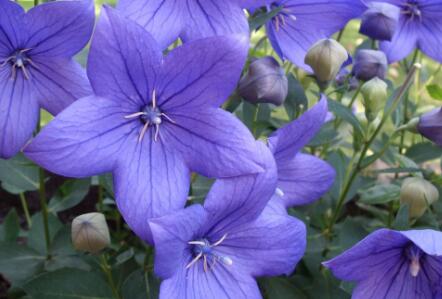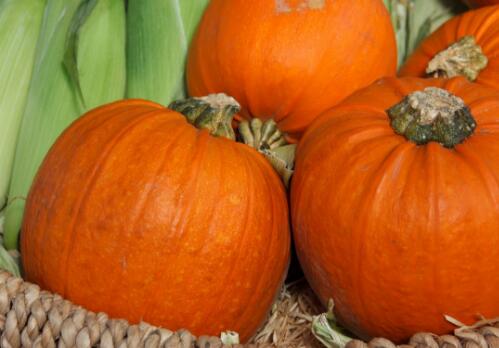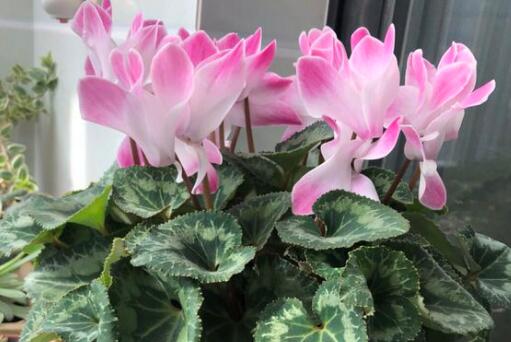When does commonly used traditional Chinese medicine Platycodon grandiflorum grow? How is the income per mu? What are the key points of artificial domestication and planting techniques?
Platycodon grandiflorum, also known as Baodang flower, bell flower, monk hat flower, just by its name, some people may mistakenly think that Platycodon grandiflorum is the stem of orange, but in fact it is not directly related to orange or citrus. Platycodon grandiflorum can be used as an ornamental flower; its root can be used as medicine, such as relieving cough and expectoration, expelling lung, expelling pus and so on. When will Platycodon grandiflorum be planted? How is the income per mu? What are the key points of artificial domestication and planting techniques?

When will Platycodon grandiflorum be planted?
The live broadcast of Platycodon grandiflorum is mainly in spring or in winter. Winter sowing takes place in early November; spring sowing takes place in April.
Second, what is the income of Platycodon grandiflorum per mu?
Planting Platycodon grandiflorum needs to invest 10,000 jin of ring fertilizer or 100 jin of compound fertilizer per mu, discount 120 yuan, seed 2 kg, 160 yuan, labor about 300 yuan, a total of 580 yuan.
The average annual output is more than 1000 kg, with a high yield of 1500 kg. According to the current purchase price of 4 yuan / kg, the mu income is 2800 yuan, plus 300kg foreign products. The processed medicinal material (the drying rate is 3:1) is 100kg, and the current purchase price is 10 yuan / kg, totaling 1000 yuan, as well as seed income. 20 kg seeds are produced per mu in the same year, and 40 yuan / kg is 800 yuan. The total income per mu is 4600 yuan. After deducting the cost, the income per mu is at least 3600 yuan.
III. Key points of artificial domestication and cultivation of Platycodon grandiflorum
The introduction and domestication of medicinal plants is the process of turning wild plants into domestic plants and foreign plants (including foreign medicinal plants) into native plants through artificial cultivation. That is, people use certain means (methods) to make plants adapt to the new environment.
1. Land selection and preparation
The sandy loam with sunny, leeward, fertile, deep and loose soil layer, good drainage and rich humus should be selected for planting. 25-40cm should be ploughed deeply in winter, and sufficient base fertilizer should be applied first. The following spring before sowing, ploughing and raking fine, according to the local custom to make beds or high ridges.
2. Cultivation and management
(1) Interseedling and fixed seedling
In the direct seeding field, the seedlings were planted once or twice in the seedling height of 3-6cm, and the overdense seedlings were thinned. When the seedling height was 6cm, the seedlings were fixed according to the plant spacing of 6-10cm. When fixing the seedlings, remove the small seedlings, weak seedlings and diseased seedlings, and replenish the seedlings in the places where there are few or no seedlings. Seedling replenishment is often carried out at the same time as inter-seedlings, that is, large seedlings are planted in the absence of seedlings.
(2) weeding and topdressing
Weeding and loosening the soil must be done frequently at the seedling stage. Pull the grass gently at the seedling stage so as not to bring out the seedlings. The seedlings should be combined with loosening the soil and weeding, and timely ploughing and weeding should be done after setting the seedlings to keep the soil loose and free of weeds. The loosening soil should be shallow to avoid root injury. After watering the planting site, the soil should be loosened shallowly when it is dry and wet. When the seedling height is about 15cm, superphosphate, potassium sulfate or compound fertilizer is applied according to the soil fertility, ditching between rows, loosening the soil after application, and watering during drought. Combine loose soil to cultivate soil before the rainy season to prevent lodging. If there is a drought after setting the seedlings, they can be watered properly. Remove stagnant water from the ground during the rainy season to avoid rotting roots.
(3) thinning flowers and fruits and preventing lodging
Platycodon grandiflorum blossom and fruit consume a lot of nutrients and affect root growth. Flower and fruit thinning is an effective measure to increase yield. The buds have been removed manually in production. Because Platycodon grandiflorum has strong apical advantage, after removing flower buds, lateral branches can germinate rapidly and form new buds. In this way, it is necessary to pick buds every half a month, and the whole flowering period needs to be picked 5 or 6 times, which is laborious and laborious and causes great damage to branches and leaves. The plant hormone ethephon can be used to spray the buds at full flowering period. this method has the advantages of high efficiency, low cost and safe use.
For the plants with remaining seeds, the terminal buds were removed when the seedling height was 10-12cm, so as to facilitate the germination of lateral buds and promote flowering and fruiting. In order to concentrate nutrients on the middle and upper fruits and make the seeds full, the buds formed on the lateral branches of the lower part of the stem should be removed in the seed field.
3. Pest control
(1) powdery mildew: mainly harms leaves. At the time of onset, the diseased leaves were covered with ash powder, which was so serious that the whole plant withered.
Control methods: clear the garden in winter, pull out the diseased plants in time, and spray with stone-sulfur mixture, Baifenjing or nifedipine at the beginning of the disease.
(2) Root rot: damage to the roots, black and brown spots appear in the damaged roots, and rot until the whole plant dies in the later stage.
Prevention and control methods: pay attention to drainage after rain, the field should not be too wet; spray biological pesticides when the disease occurs.
4. Harvesting and processing
(1) harvesting
Platycodon grandiflorum was harvested in the same year, 2 years or 3 years after planting, and it was harvested in spring and autumn. The weight, quality and quality of Platycodon grandiflorum were better in autumn. Generally, when the aboveground stems and leaves wither, the roots have not been enriched prematurely, and the drying rate is low, which affects the yield; it is not easy to peel too late. After ploughing the roots, remove the stems and leaves, shake off the soil, cut off the whisker roots, wash them in water, and then carry out the primary processing of peeling.
(2) processing
Scrape off the skin with a bowl slice or bamboo knife. Scraping should be carried out while it is fresh, it is best to dig it back, the time has been prolonged, and the root skin is difficult to scrape. After scraping, wash and dry, remove the Reed head, moisturize, slice, dry and store.
Product quality: no outer skin, Reed head, impurities, moth, mildew, foot dry is better. The root strip is enlarged, white, solid, slightly granular in section, with chrysanthemum pattern and bitter taste.
Time: 2019-03-14 Click:
- Prev

How to grow pumpkins in Taizao Huali? (with key techniques of greenhouse cultivation and open field cultivation in early spring)
Taizao Huali is a variety of pumpkin, very precocious, is a high-yield tender pumpkin. The growth of the plant is steady, and the growth of the vine is not easy to affect the fruit bearing. Generally speaking, it can set 3-5 fruits continuously. Under the condition of big fat and heavy water, each plant can harvest 12-15 melons, and the weight of a single melon is 500-700 grams.
- Next

What are the effects and functions of cyclamen, the queen of potted flowers? What if the leaves turn yellow? (notes for changing basin are attached)
Cyclamen, also known as rabbit flower, is a characteristic flower plant native to the Mediterranean region, and later introduced to all parts of the world. Now it is one of the most common ornamental flowers in the world, known as the queen of potted flowers. Cyclamen is beautiful in appearance and full of fragrance of flowers. Many people like it.
Related
- Fuxing push coffee new agricultural production and marketing class: lack of small-scale processing plants
- Jujube rice field leisure farm deep ploughing Yilan for five years to create a space for organic food and play
- Nongyu Farm-A trial of organic papaya for brave women with advanced technology
- Four points for attention in the prevention and control of diseases and insect pests of edible fungi
- How to add nutrient solution to Edible Fungi
- Is there any good way to control edible fungus mites?
- Open Inoculation Technology of Edible Fungi
- Is there any clever way to use fertilizer for edible fungus in winter?
- What agents are used to kill the pathogens of edible fungi in the mushroom shed?
- Rapid drying of Edible Fungi

